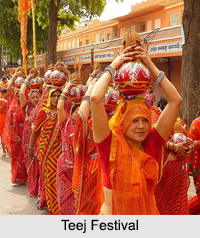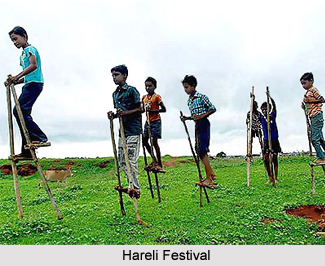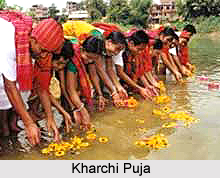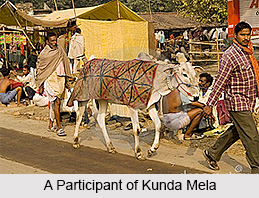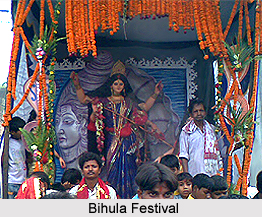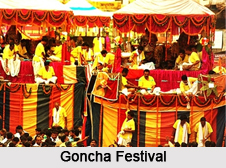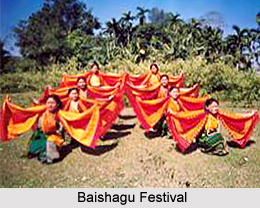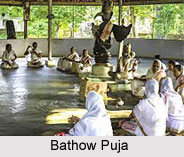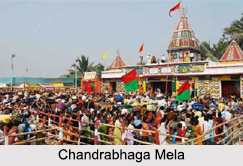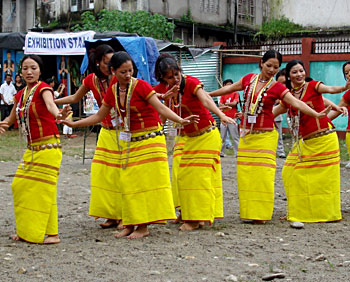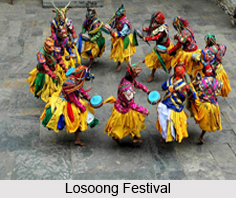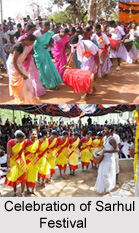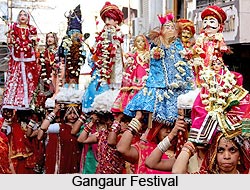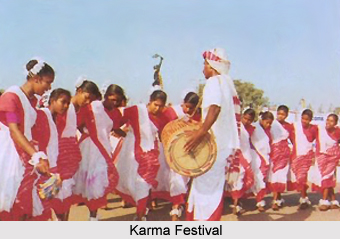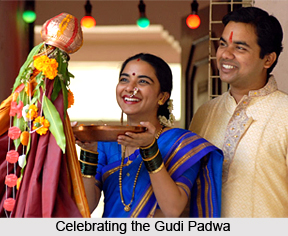 Gudi Padwa is celebrated in the western Indian state of Maharashtra and it is a day of great festivity and rejoicing and a festive event that heralds the advent of spring. Also known as `Gudhi Padva`, this festival is generally observed on the very first day of the month of `Chaitra` to celebrate the commencement of the New Year as per the Hindu calendar. It is believed that Gudi Padwa is the Marathi term for `Chaitra Shukla Pratipada`. The day of Gudi Padwa is also the initial day of Chaitra Navaratri and `Ghatasthapana` during which the ritual of `Kalash Sthapana` is performed. The term `Padwa` has been derived from `Pratipada`, a Sanskrit word which falls on the first day following the new moon day or `Amavasya` while `Gudi` implies a kind of flag which is hoisted during this festival. The word `Padwa` is also connected to the third day of Diwali named `Balipratipada`. Gudi Padwa is considered one of the four most auspicious days in the year when people start new ventures. It is believed that Lord Brahma created the world on this day and so he is worshipped especially at this time.
Gudi Padwa is celebrated in the western Indian state of Maharashtra and it is a day of great festivity and rejoicing and a festive event that heralds the advent of spring. Also known as `Gudhi Padva`, this festival is generally observed on the very first day of the month of `Chaitra` to celebrate the commencement of the New Year as per the Hindu calendar. It is believed that Gudi Padwa is the Marathi term for `Chaitra Shukla Pratipada`. The day of Gudi Padwa is also the initial day of Chaitra Navaratri and `Ghatasthapana` during which the ritual of `Kalash Sthapana` is performed. The term `Padwa` has been derived from `Pratipada`, a Sanskrit word which falls on the first day following the new moon day or `Amavasya` while `Gudi` implies a kind of flag which is hoisted during this festival. The word `Padwa` is also connected to the third day of Diwali named `Balipratipada`. Gudi Padwa is considered one of the four most auspicious days in the year when people start new ventures. It is believed that Lord Brahma created the world on this day and so he is worshipped especially at this time.
Significance of Gudi Padwa
Gudi Padwa is also celebrated as the New Year`s Day, particularly for Marathi people as it is observed on the first day of the first month in a year. Therefore, the day of Gudi Padwa is also said to be associated with the conclusion of one agricultural season and commencement of a brand new season. For this reason, the festival is also celebrated at the final part of the Rabi season and is amongst the `Saadhe-Teen Muhurta` according to the Indian calendar. Historically, the festival marks the beginning of Vikram calendar after he had emerged victorious against the Sakas in a battle. The Brahma Purana asserts that Lord Brahma had created the world on this very day and time had begun to tick from this time onwards. As per the Hindu calendar, Gudi Padwa festival celebrates the arrival of the spring season or the `Vasanta Ritu`.
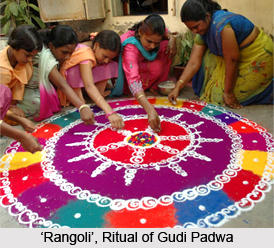
Rituals of Gudi Padwa
During Gudi Padwa, a `Gudi` is stuck out of windows and even beautifully exhibited in some Maharashtrian residences. People fix a yellow or bright-coloured cloth decorated with `zari` or brocade tied to the tip of a bamboo over a twig of mango leaves, neem leaves and sugar crystals or `gaathi` and a garland of red flowers is also tied to this. A copper or silver pot is then inverted and placed over it, and together it is known as Gudi. The residents of Maharashtra believe Gudi symbolises the victory of the Marathas which was spearheaded by Chhatrapati Shivaji and therefore it is hung inside households in order to usher good luck and prosperity. The gudi is marked with a `swastika`. It is raised to announce victory and joy. This gudi is erected at sunrise and removed at sunset. People visit the temples to listen to the yearly calendar- `Panchangasravanam` as priests make predictions for the coming year.
People prepare for the New Year by cleaning and washing their houses and buying new clothes. The `Prasad` of Gudi Padwa are the bitter leaves of the neem tree with jaggery. There are special foods prepared for this festival. In Maharashtra, `Shrikhand` -a fragrant yogurt dessert, with `poori`- fried puffy bread is prepared. Greetings and sweets are exchanged. It has become a custom to hold `Kavi Sammelans` on this day. Womenfolk as well as children create attractive `Rangoli` patterns over their doorsteps to welcome Gudi Padwa.
